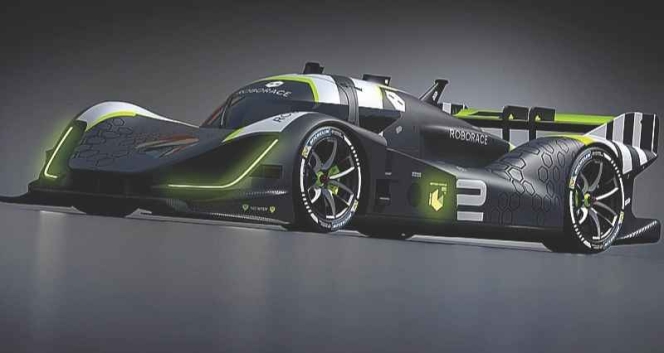
Tyre research and development racing groups are working vigorously on new combinations of hardeners, fillers, polymers or fine-tuning design parameters. They are eagerly looking for ways to improve grip, durability, handling and comfort in wet or dry conditions. They customise tyres for particular weather and track conditions. Each of their design logic is different. On race tracks, the tyres operate under extreme conditions that cannot be fully simulated on indoor test drums. Therefore, the development of the tyre is always complemented by the actual result of the route. They bring dozens of different specification tyres to the track for a single sponsored car. Regular road tyres are very different from racing tyres. However, tyre manufacturers are still considering or applying a combination of new race specifications to improve rolling resistance, increase grip or maximise durability.
Motorsport is in many ways the ultimate R&D programme for the tyre companies, and they spend heavy budgets on such programmes. Thus, they strictly defend their intellectual property. They pick up all the pieces of rubber that were torn off and left on the track to make sure they have all the tyres again. They work until they are sure they have all the parts.
 The racing car reaches a top speed of up to 400 kmph, and the tyre has to withstand temperatures of up to 240 degree Celsius at the point. Or on slower, more twisty tracks, a softer tyre offers more grip, but it still reaches very high working temperatures. Each tyre specification consists of the owner’s technology and each is worth protecting its intellectual property. There are examples where a company threatens racing teams with a fine of one million euros for every tyre lost. Tyre companies don’t want to leave any chance of technology leakage. Every company is very keen to collect its racing tyres before it leaves the circuit. The tyres later are cut off in small pieces and sent to incinerating areas.
The racing car reaches a top speed of up to 400 kmph, and the tyre has to withstand temperatures of up to 240 degree Celsius at the point. Or on slower, more twisty tracks, a softer tyre offers more grip, but it still reaches very high working temperatures. Each tyre specification consists of the owner’s technology and each is worth protecting its intellectual property. There are examples where a company threatens racing teams with a fine of one million euros for every tyre lost. Tyre companies don’t want to leave any chance of technology leakage. Every company is very keen to collect its racing tyres before it leaves the circuit. The tyres later are cut off in small pieces and sent to incinerating areas.
But anyway, when all the racing teams arrive on the circuit with hundreds of tyres, they take the risk of leaking some IP information.
The Ultra High Performance (UHP) tyres must have sufficient speed capability along with wet and dry grip performance, which are reflections of some rally tyre specifications
Racing tyres are racers’ best friends and can meet the demands of extreme conditions. Tyres are generally differentiated into ‘soft’, ‘medium’ and ‘hard’. A softer tyre is faster and safer in rallies but has a shorter life, while the hard-tread tyre provides a longer life. On the other hand, there are commercially available rally tyres with different tread compounds belonging to the major brands of rally tyres. Compounds for uphill and wet use for lighter and heavier cars, slick compound for lighter cars, softer and harder slick compound for lighter rally, sprint and endurance, Soft-Medium- Ultra-Very Hard Compound for Slick or Classic, Hard- Soft Compound for Sports Cars, Very Soft-Soft-Medium-Hard GT Hill Climb Blend, Soft Compound for Rally-Cross Applications are such examples.
When we talk about UHP as a car, it is equipped with upgrades such as a more powerful engine, more powerful brakes, sports suspension and UHP tyres, but especially the body style that shares the base model. Therefore, UHP tyres must have sufficient speed capability along with wet and dry grip performance. Rolling resistance is a leap back and opposes the high grip rate of performance tyres. All these facts are brought together, thanks to the hard work and experience of people in R&D.
Motorsport is an important technological tool for the automotive industry. So it does open horizons to tyre designers.
The rubber of a tyre is viscoelastic; it deforms and adapts to the texture of the road surface as it rolls over it. This asymmetric deformation of the rubber generates a reaction force that prevents drift. In other words, it generates a frictional force which is defined as a grip. The coefficient of friction between the surfaces of the tyre and the track depends mainly on the behaviour of the tyre’s rubber. Tyre hysteresis is a critical factor in generating grip.
Molecular interactions occur at the interface between the tyre rubber and the road surface, which generates grip. The molecular chains of rubber follow this cycle of stretching and breaking, which creates viscoelastic work. This work effectively multiplies the amount of bond energy by a factor that depends on the temperature of the rubber and the speed of rolling. Tyre grip has heretofore been referred to as ‘molecular grip’, which also means why a tyre deposits rubber on a racing track depending on the rubber’s hysteresis, deformability and viscosity. These three parameters are consisting three corners of a triangle. Stretching only one corner to maximise performance does not work.
In many ways, motorsport is part of the ultimate R&D programme. Every aspect of a modern vehicle already part of everyday life has been built and generated with specific technology business development programmes.
Motorsport is an important technological tool for the automotive industry. It is in motorsport that automotive technology evolves. The same goes for racing vehicle tyres that run under such vehicles and are superior in materials and structures, which will later suit the next generation UHP tyres.
In the early days of the automobile, rallies were a kind of enthusiasm full of adrenaline. ‘Motorsport’ organisations are a convenient way to test attained abilities and stimulate technology in science and people’s lives. Vehicle dynamics is one of the critical issues in the present century and the last century. Much trial and error have been carried out in recent years to achieve speed, safety and transport capacity.
Today’s vehicles are full of sensors for different functions to alert drivers about faulty parts. Pressure monitoring systems in tyres are popular the EU . Tyre Pressure Monitoring System (TPMS) became mandatory for all M1 vehicle classes after 1 November 2014. Automated Tyre Monitoring and Inflation System can ensure adequate tyre pressure to meet better handling requirements, which is possible with today’s technology and quite suitable for motorsport vehicles. The tyre, as the most important part of vehicles, has varying characteristics with its viscoelastic structure. The automated tyre monitoring and inflation system will reduce the effect of variance on the tyres.
What are the breakthroughs in motorsport events today?
Motorsport by virtual reality could be fully utilised in the design and upgrading of vehicles. Different vehicle models, weather conditions, tyres and situations can be simulated with minimum stress and fun, and this can encourage radical innovations to scale down with significant money savings.
What about self-driving car races?
The Roborace championships with fully autonomous car races have already started in 2019. Self-driving cars on the road are an incredible achievement, thanks to complex algorithms. It learns and reacts to the racing environment and has faster ‘reflexes’ than any human driver capable of making predictions. It is said that a prototype autonomous vehicle generates 100 TB of data a day, which is open to different skills for younger generations.
But either way, the challenges of motorsport will need talented engineers to harness the cutting edge technology of tomorrow’s motorsport. (TT)
- Yokohama Rubber
- GEOLANDAR X-AT
- All-Terrain Tyres
- Racing Tyres
- FIA Extreme H World Cup
- Hydrogen-Powered Motorsport
Yokohama Rubber To Power FIA Extreme H World Cup With GEOLANDAR Tyres
- By TT News
- September 12, 2025

The Yokohama Rubber Co., Ltd. has been selected as the official tyre supplier for the groundbreaking FIA Extreme H World Cup, the world's first hydrogen-powered motorsport series. The company will supply its GEOLANDAR brand of tyres for the championship, which is scheduled to commence next month in Saudi Arabia. The company will also continue to supply GEOLANDAR tyres for the Extreme E off-road electric vehicle series, which holds its final event on 4–5 October in Saudi Arabia.
Central to both the Extreme H and Extreme E series is a shared mission to advance sustainability and equality. The championships serve as dynamic platforms to promote environmental awareness and demonstrate cutting-edge technologies while also enforcing a strict mandate for gender parity by requiring each team to field one male and one female driver. The Extreme H series will feature eight international teams operating the Pioneer 25, a cutting-edge hydrogen fuel cell vehicle capable of generating 550 horsepower and accelerating from 0 to 100 kmph in 4.5 seconds. The global significance of this new championship is expected to draw a worldwide television audience across multiple continents.
As the predecessor to Extreme H, the Extreme E series utilised the high-performance all-electric Odyssey 21 vehicle. All teams competing in the new hydrogen series will also participate in this final Extreme E event, marking the conclusion of the electric championship as it transitions towards a hydrogen future.
In alignment with the environmental principles of these series, Yokohama Rubber will provide a specially developed prototype tyre based on its GEOLANDAR X-AT model. This tyre has been engineered with a significantly increased ratio of sustainable materials, comprising 38 percent renewable and recycled content. It has also been fortified with enhanced durability characteristics to withstand the unique demands of heavy hydrogen-powered and electric off-road racing vehicles.
Hankook Tire Unveils Future Mobility Innovations At 'Design Innovation Day 2025'
- By TT News
- September 12, 2025
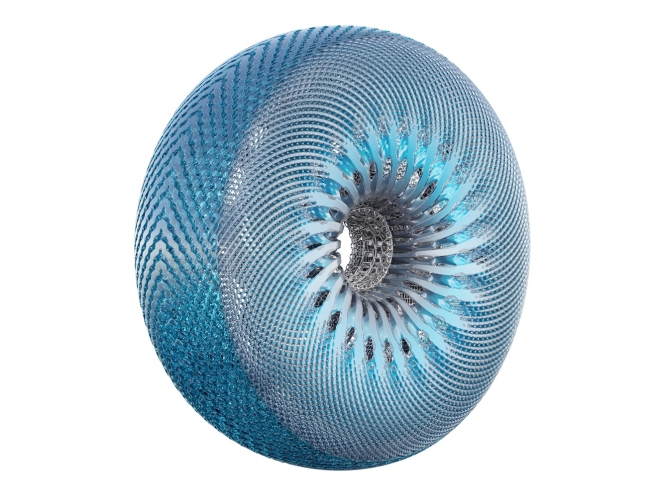
Hankook Tire is advancing its future mobility leadership through strategic open innovation and collaborative design projects. This effort was showcased at the company’s recent Design Innovation Day 2025, held at its Pangyo Technoplex headquarters. The event serves as a platform to present new solutions integrating sustainability, innovation and design while reinforcing partnerships with global technology leaders.
A major focus was the unveiling of two key outcomes from Hankook’s ongoing Design Innovation Project. The first was ‘Sustainable Concept Tyre’, an embodiment of the company’s ESG vision. Developed using advanced 3D printing technology, it is constructed from renewable and recycled materials. Its distinctive organic design was realised in collaboration with Harvestance using specialised engineering software.
The second reveal was the WheelBot 2, a multi-directional mobility platform developed with robotics startup CALMANTECH. This advanced robotic wheel system, equipped with tri-axial spherical tyres, demonstrates new possibilities for movement. Its potential was illustrated through a live demonstration of the PathCruizer, a two-seater pod concept powered by the WheelBot technology.
Beyond product reveals, the event highlighted Hankook’s commitment to knowledge sharing, featuring a presentation on 3D printing advancements from LG Electronics. These collaborations are central to Hankook’s strategy of strengthening its technology leadership. Since 2012, the company has partnered with world-renowned design universities and technology firms, consistently earning prestigious international design awards and solidifying the premium stature of its global brand.
CEAT Cuts Tyre Prices Across Portfolio Following GST Rate Reduction
- By TT News
- September 12, 2025
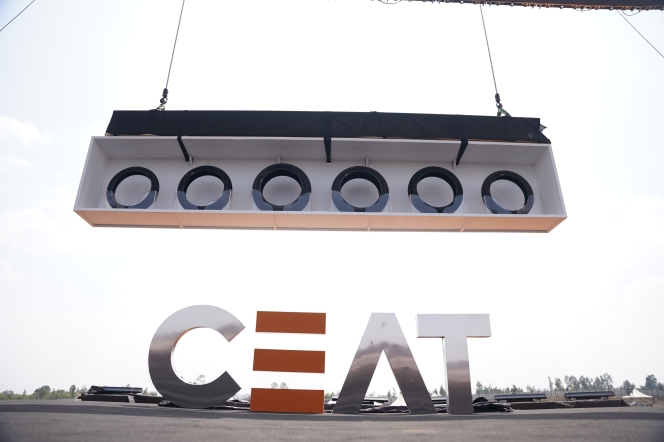
Indian tyre maker to pass full benefit of tax cuts to customers from 22 September
CEAT Limited said on Thursday it would reduce prices across its entire tyre range following the Indian government’s decision to cut goods and services tax (GST) rates on tyres, with the full benefit being passed on to customers.
The Mumbai-based tyre manufacturer said new prices would take effect from 22 September, covering commercial, agricultural, passenger vehicle and two-wheeler segments.
India’s 56th GST Council meeting approved significant reductions in tax rates for the tyre industry. GST on new pneumatic tyres was cut to 18% from 28%, whilst tractor tyres and tubes will attract a reduced rate of 5%.
“We thank the Government of India and the GST Council for their timely and progressive decision to rationalise tax rates in the tyre sector,” said Arnab Banerjee, Managing Director & CEO of CEAT Limited.
“The reduced GST slabs will greatly benefit the tyre industry and consumers alike. Not only will it lower the cost of owning and operating a vehicle for customers across various segments, but by making tyres more affordable to replace, it will also make our roads safer.”
Banerjee added the move would “spur formalisation and greater compliance, while also fostering sustainable growth in the sector.”
The GST rate cuts represent a significant policy shift for India’s automotive sector, where high taxation has been a longstanding concern for manufacturers and consumers.
Yokohama Rubber Recognised As ‘DX Certified Business Operator’ By Japan’s METI
- By TT News
- September 12, 2025
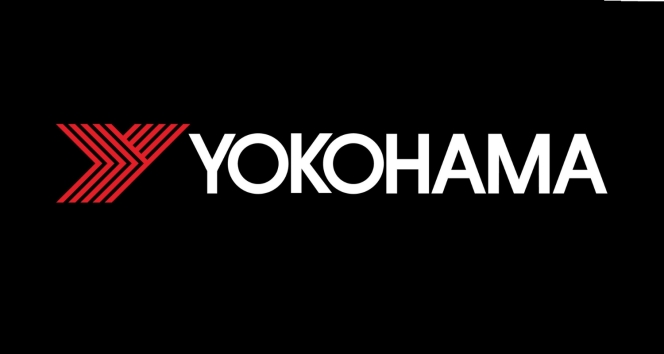
The Yokohama Rubber Co., Ltd. has been officially recognised as a DX Certified Business Operator by Japan's Ministry of Economy, Trade and Industry (METI). The designation, which was granted on 1 September 2025, identifies companies that are thoroughly prepared for digital transformation as outlined by the Digital Governance Code.
This certification acknowledges Yokohama Rubber's comprehensive strategy for digital transformation, which is built on three core objectives: advancing business strategy, contributing to sustainability and reinforcing its IT infrastructure. Central to this effort is the company's proprietary AI framework, HAICoLab (Humans and AI ColLaborate), which drives group-wide digital initiatives. These include improving productivity, innovating processes, developing digital talent and building a global cloud-based IT system. The certification confirms that the company's efforts not only meet METI's stringent criteria but also demonstrate appropriate disclosure of information to its stakeholders.
Moving forward, the company said it will continue to leverage data from its entire value chain to adapt to a dynamic business environment. The company aims to enhance customer value, pursue sustainable innovation and transform its corporate culture to strengthen its competitive position and ensure long-term growth.



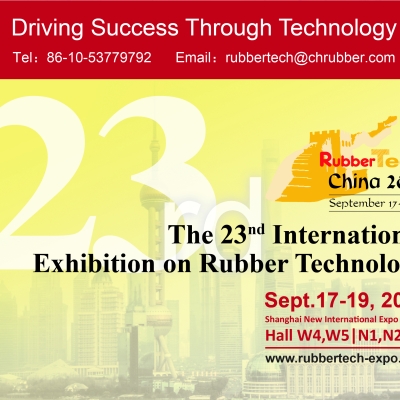


Comments (0)
ADD COMMENT